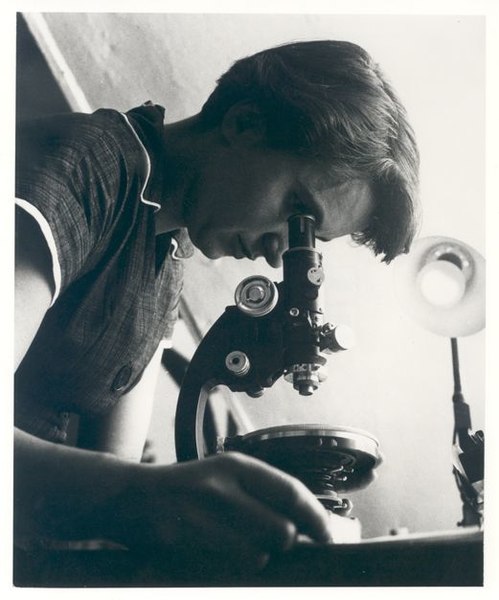
Rosalind Franklin was a chemist and X-ray crystallographer whose work led to multiple Nobel Prizes for other people...
The first Nobel Prize her work led to was the result of an X-ray image she took of calf DNA.
Franklin used innovative X-ray diffraction techniques that created clearer images of DNA than had ever been taken before.
The images were clear enough to see the helix structure of DNA, which Franklin noted in her research.
Known as "Photo 51," the picture that led to a Nobel Prize doesn't look like much by TODAY's standards...
But it looked like a whole lot in 1951!
Scientists James Watson and Francis Crick used Franklin's image and research to co-author an academic paper proposing the double helix structure of DNA molecules. The paper was published in Nature in April 1953, with barely a mention of Franklin's contribution.
Watson and Crick later won a Nobel Prize in 1962 for their "discovery" of the double helix structure of DNA molecules... Franklin did not.
There is a small wrinkle in why Franklin didn't win the prize: Franklin's life was taken by ovarian cancer in 1958. Nobel Prizes are not awarded posthumously unless the recipient passed away after the prize had already been announced.
Whether or not Franklin would have received the prize if she were still alive... We'll never know. We can hope she would have been given the credit she deserved.
The Other Nobel Prize...
After her work on DNA, Rosalind Franklin's research focused on RNA—an equally important nucleic acid to life.
Franklin was applying her special X-ray techniques to study viruses, many of which contain only RNA and no DNA.
Franklin was joined in this research by Aaron Klug. The two of them turned their eyes on the poliovirus in particular.
As previously mentioned, Rosalind Franklin's life was taken by ovarian cancer in 1958. It's fair to say her death was tragically premature: she was only 37! After her death, Aaron Klug took the lead on her research.
Following Franklin's lead, Klug's research on the polio virus eventually led to discoveries of the genetic structure of many viruses.
Aaron Klug won a Nobel Prize for his (and Franklin's) work in 1982.
It's extraordinarily rare for an individual to have as significant of an impact on the world of science as Rosalind Franklin did. Unfortunately, all we can do is imagine how much more she would have accomplished had she lived longer.
At CRI Genetics, we salute Rosalind Franklin every day. We literally have a mural of her in our office!
I hope you find her as inspiring as we do.